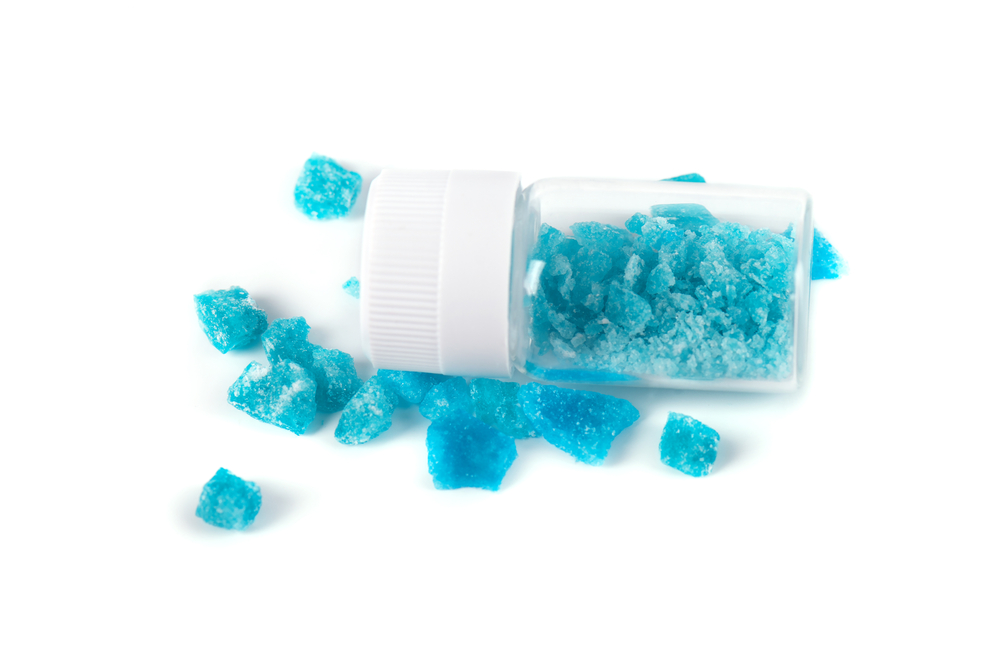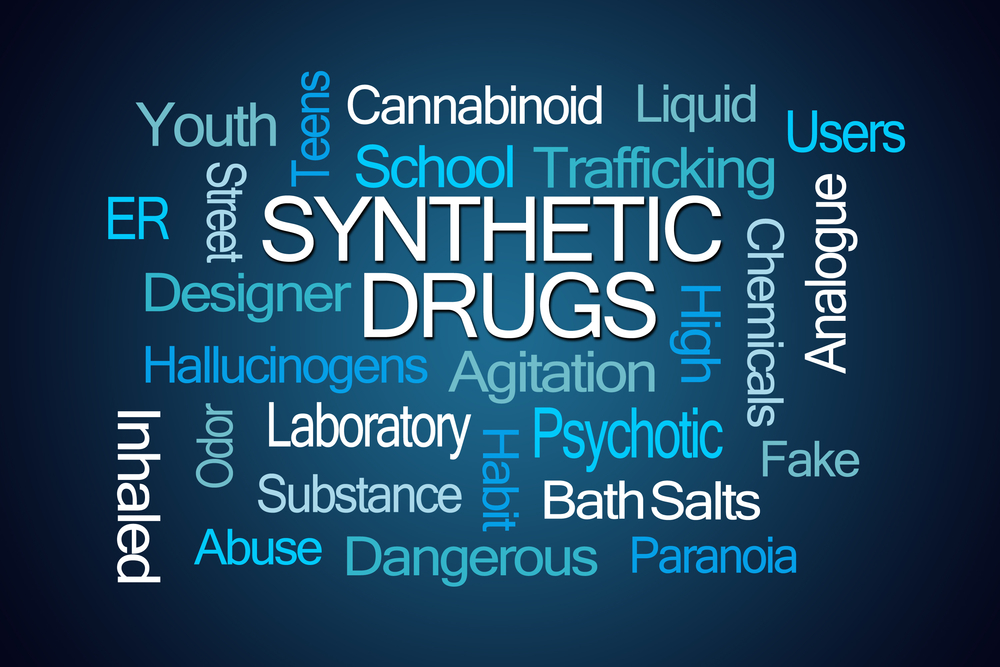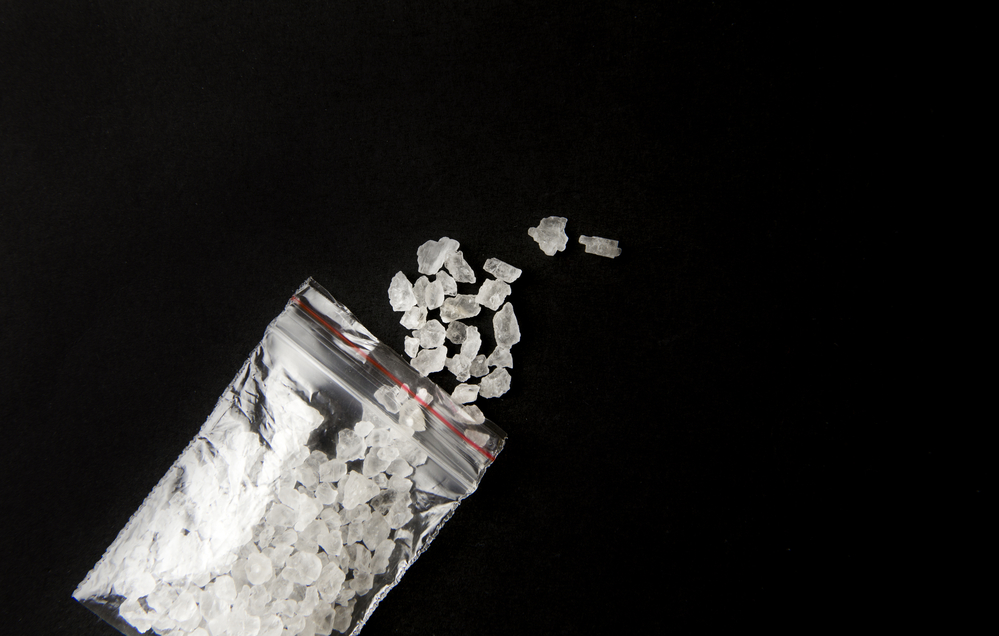A qualified treatment program can provide you with high-level, individualized treatment to help you find a way forward from bath salt addiction. If you’re not sure you have a drug addiction, professionals can help you figure it out.

Cathinones are a stimulant found naturally in parts of the world, but individuals facing bath salts addiction have become dependent on a synthetic version of the drug. Unfortunately, the man-made or synthetic drug versions of the substance are typically stronger and more dangerous than their natural counterpart. This higher potency can result in addictive and violent behavior.
While bath salts are marketed as jewelry cleaner, plant food or research chemicals, they actually serve none of these purposes. Synthetic cathinone is manufactured solely for recreational use. Many people who use it do so in place of MDMA, meth and other forms of stimulant abuse. Unfortunately, some believe the substance’s former legality means it’s safer than other drugs.
In reality, bath salts addiction is just as dangerous as any other form of substance abuse. Panic attacks, extreme hallucinations and even death are just some of the possible outcomes. If you believe you or a loved one may be addicted to bath salts, the time to seek help is now. Let our drug rehab in Delray Beach, Florida help you.
The mechanism of how bath salts affect the brain isn’t fully known, but its chemical structure is similar to other stimulant drugs. This means high levels of energy, focus and awareness can occur. There are many types of bath salts out there, and each could have varying effects on the brain. The one constant is their addictive nature and the presented symptoms of chemical dependency and drug abuse.
Similar to some other stimulants, bath salts addiction is often linked to dopamine transmission being stimulated by the drug. Your body will become accustomed to these higher levels, and this can lead to dependency and difficulty ceasing use. If you experienced any of the following symptoms, it’s very likely that you have bath salt addiction:
If you’re experiencing any of the symptoms of bath salts addiction, it’s important to seek treatment before you experience more extreme signs such as mental disorders and physical health problems. At Transformations Treatment Center, we offer a holistic approach focused on overcoming dependency and continued success in recovery. You can reach out to us right now if you’re ready to get on the road to recovery.
If you’re still unsure if you have a substance abuse disorder involving bath salts, one major red flag is the existence of withdrawal symptoms when you go without the drug. Since your brain has become accustomed to higher dopamine levels, it doesn’t know how to react when those levels suddenly drop. This can result in severe withdrawal symptoms that often lead to relapse.
These symptoms of withdrawal are a sure sign that bath salts addiction is present:
Unfortunately, bath salts withdrawal symptoms can last for weeks. This is one of the primary reasons people relapse following an attempt to quit. Asking anyone to deal with these severe withdrawal effects is a tall order, but that’s what makes the medical detoxification process so important. It focuses on reducing these symptoms while the drug leaves your body.
The only silver lining in withdrawal symptoms is that they are rarely fatal. People who lose access to drugs (e.g. in prison) or choose to quit on their own experience unpleasant side effects, but they’re unlikely to die from the symptoms. Many of the real dangers of bath salts addiction come during usage.
These are just some of the symptoms that could occur while on synthetic cathinones:
The severity of your symptoms could vary greatly depending on how you take the substance. While many people simply swallow bath salts, those who smoke, snort or inject the drug can experience different symptoms. Injection and snorting have been shown to have the most severe negative outcomes – including a higher likelihood of death.
There are many symptoms of bath salts addiction, and the overwhelming majority are severe and dangerous. If you think you might have a problem, reach out for help today.

If a loved one is suffering from a bath salts addiction, you have a difficult path ahead of you. The first step in getting someone help is having them admit there’s a problem. Unfortunately, one of the main signs of any addiction is lying about using the substance. This can make it difficult for you to even be sure a dependency issue exists at all.
No matter how hard someone tries to hide their addiction to bath salts, though, there are a few signs that can’t be hidden. The effects of this drug are often unpredictable, so the realization could happen completely out of the blue. Some of the signs of bath salts addiction could also point towards other issues, but if these situations are arising, a problem certainly exists.
Take notice if any of the following signs present themselves:
If you notice any of these signs, it’s important that you take action now. In addition to potentially violent and illegal behavior, bath salts abuse can lead to seizures, cardiac arrest, stroke, organ failure and death. These can happen after a single incident of use. If you need help broaching the subject with your loved one, review our Family Member Support Guide.
While synthetic cathinone has been around for decades, use of the drug in America took off around 2007. Due to the recency of its widespread popularity, there is minimal data related to addiction and usage. The data from Substance Abuse and Mental Health Services Administration (SAMHSA) that we do have, however, shows a persistent problem even after the drug was banned in the U.S. and many other countries.
The following statistics show that bath salts addiction is still a public health risk:
The silver lining in this data is that overall abuse of bath salts is on the decline. Less than 1 percent of teenagers are taking the drug, and both emergency department visits and poison center calls are dropping. Unfortunately, MDMA is still being laced with bath salts. This means ecstasy abuse could be putting people into more danger than they realize.
The decline in overall use, however, doesn’t do much for those facing bath salts addiction. If you or a loved one is suffering from this substance abuse disorder, contact us today at Transformations Treatment Center. We’re here to help you get on the road to recovery through our outpatient care.

Due to the potential for withdrawal symptoms, most bath salt addiction treatment programs start with detoxification. This typically involves 24-hour medical supervision through an inpatient treatment program that can help a person manage symptoms while their brain returns to its normal chemical makeup. The process will vary depending on a variety of elements, and full detox could take weeks.
All the following factors could affect the length and severity of withdrawal:
Recovery and additional treatment for bath salts addiction can only be undertaken once the drug is no longer in your body and withdrawal symptoms cease. If there are co-occurring disorders – such as mental health issues or abuse of other drugs – these must be addressed as well. Full recovery is only possible when underlying and concurrent issues are dealt with.
Recovering from an addiction to bath salts typically revolves around modern psychotherapy combined with the traditional medication therapy. Cognitive behavioral therapy, contingency management, and motivational enhancement therapy all have known benefits when dealing with addiction to this drug. Similar to the initial detox process, though, recovery will vary between individuals .
At Transformations Treatment Center, our goal is to create individualized treatment programs for each patient. Everyone followed a different path that led to bath salts addiction, so why wouldn’t their paths to recovery differ as well? In addition to the psychotherapy options mentioned earlier, you’ll also find the following bath salt addiction treatment and recovery services at Transformations:
In addition to customizing treatment and recovery plans on an individual basis, our South Florida treatment center also focuses on a holistic approach to drug and alcohol addiction recovery. This means you’ll find recovery services that focus on your mind, body and spirit. In cases where appropriate, families are also included in these plans.
Unfortunately, recovery from bath salts addiction isn’t a weekend retreat. It’s a long process with many hurdles. That’s why our aftercare program stays in contact with Transformations alum in order to help them remain successful in their journey. When done right, overcoming addiction is possible.
Overcoming substance abuse requires vigilance and scientifically supported addiction treatment programs. This is what you’ll find at Transformations Treatment Center. If you or a loved one need bath salts rehab in Delray Beach, FL please contact us today at 877-976-4335.
National Institute on Drug Abuse
https://www.drugabuse.gov/drug-topics/synthetic-cathinones-bath-salts
Pharmacy and Therapeutics
https://www.ncbi.nlm.nih.gov/pmc/articles/PMC3474442/
Substance Abuse and Mental Health Services Administration
https://www.samhsa.gov/data/sites/default/files/spot117-bath-salts-2013/spot117-bath-salts-2013.pdf
U.S. Department of Justice
https://www.justice.gov/archive/ndic/pubs44/44571/44571p.pdf
Drug and Alcohol Dependence
https://www.ncbi.nlm.nih.gov/pmc/articles/PMC4792679/